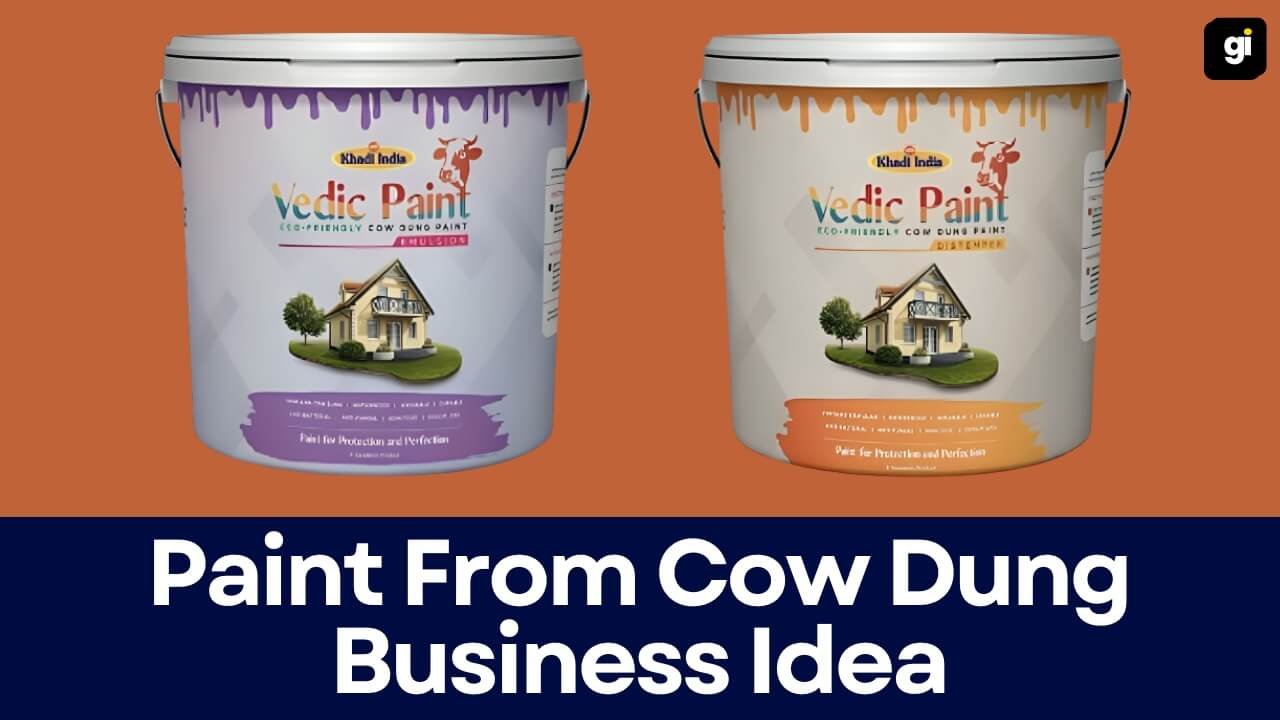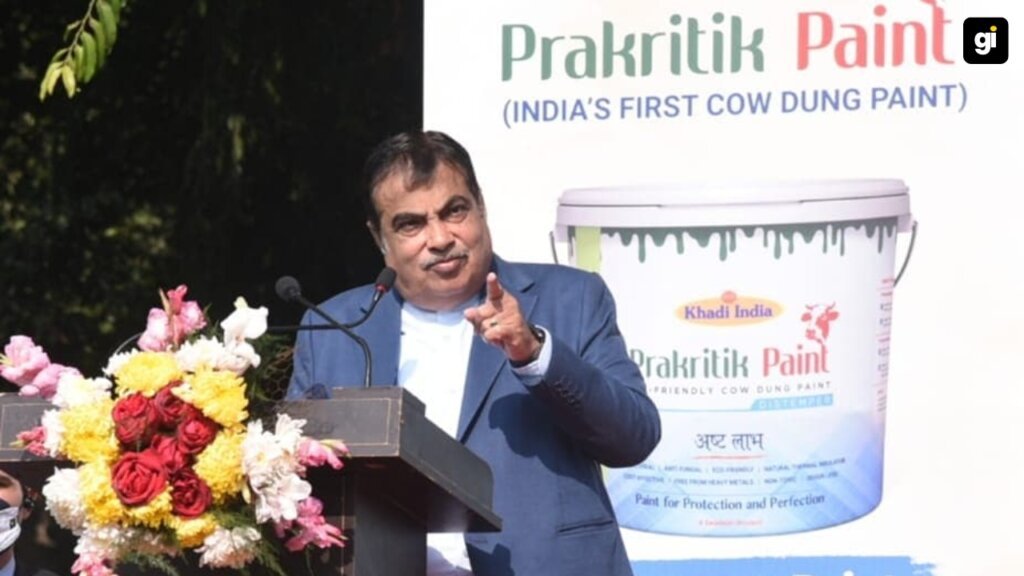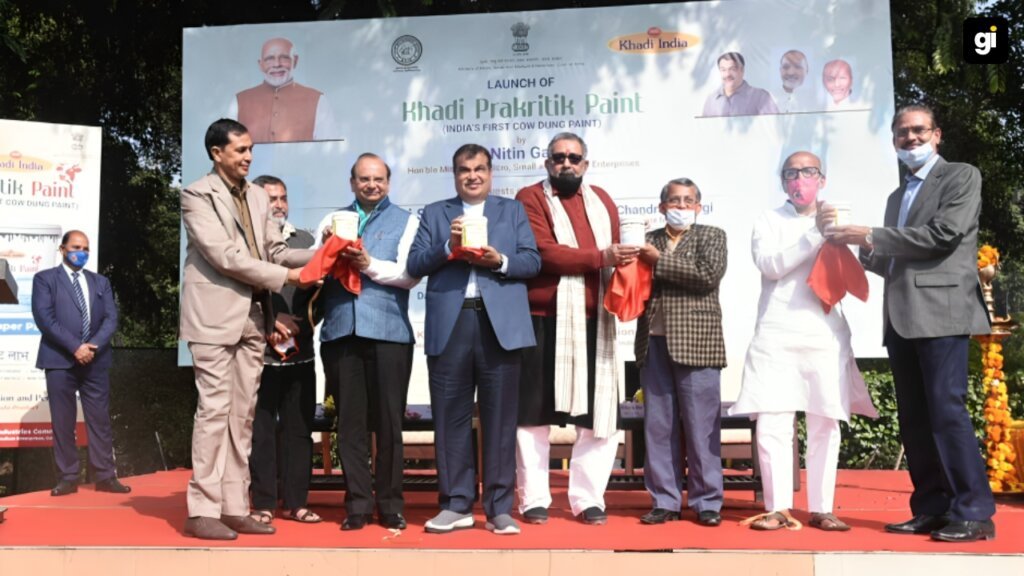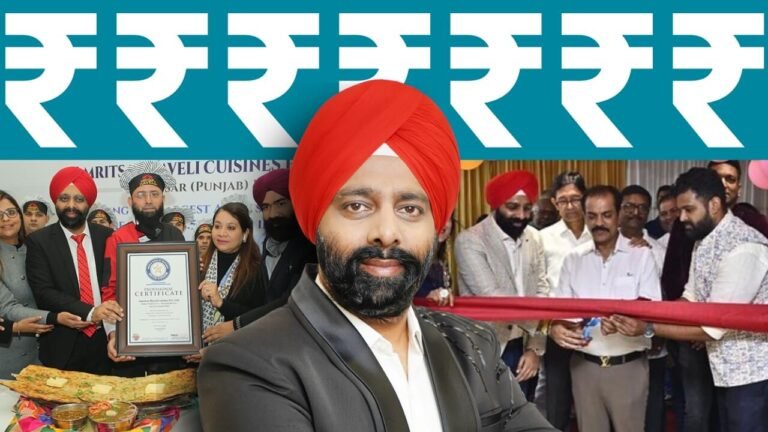Cow Dung: Revolutionizing Eco-Friendly Paints

In the present weave of Indian ingenuity, one unexpected element stands out: cow dung. Yes, you read it correctly. Cow dung, an integral component of rural life in India, has entered an unusual domain: paint manufacture.
This developing program promises environmentally sustainable alternatives and provides financial prospects for rural entrepreneurs.
A unique solution to environmental challenges.
The Indian paints industry is expected to be worth USD 9.6 billion in 2024, with significant players including Akzo Nobel, Asian Paints, and Berger. However, in this competitive environment, a dramatic transformation is taking place.
The government intends to carve out a niche for cow dung paint by capturing 7.5% of the market share. What makes cow dung paint so unique? It’s more than simply paint; it’s a sustainable answer to environmental issues.
The Magic of Cow Dung Paint
Cow dung symbolizes ingenuity and sustainability. Paint made from cow waste has a wealth of advantages: it is antibacterial, antifungal, odorless, and free of toxins.
The Khadi & Village Industries Commission (KVIC) created this environmentally friendly masterpiece, which is marketed under the Prakritik Paint name. KVIC’s goal is to transform the paint industry while empowering rural people by utilizing the power of cow dung.

Process of Making Cow Dung Paint
Cow Dung collecting
The procedure begins with collecting fresh cow dung from cattle, preferably from indigenous cow breeds known for high-quality dung production. To ensure hygiene, manure is collect in clean, dry containers.
Drying and Powdering
In the process, workers spread the collected cow dung thinly and evenly on a clean surface, allowing it to dry in the sun. After it has thoroughly dried, they grind it into a fine powder using a grinder or mortar and pestle. This powdered cow excrement serves as the essential ingredient in making paint.
Bleaching
To ensure that the cow dung powder is pure and clean, it is bleached. This entails treating the powder with natural bleaching chemicals to remove contaminants and microorganisms.
Mixing with Pigments and Binders
The artisans combine bleached cow dung powder with natural pigments, thickeners, and binding agents to create the paint base. They prefer using natural colors generated from minerals or plant extracts because of their environmental benefits.
Quality Control and Testing
The freshly made paint is subjected to stringent quality control techniques to ensure compliance with requirements. Color uniformity, texture, and durability are all tested to ensure that they satisfy customer expectations.
Packaging
After passing quality inspections, the paint is packed in environmentally appropriate containers, stressing sustainability throughout the manufacturing process. Proper labeling that includes product information and usage instructions is critical for consumer awareness.
Distribution and Marketing
The final cow dung paint is now ready for distribution and marketing. Consumers have access to the paint across a wide range of demographics by utilizing digital platforms, traditional marketing channels, and retail partnerships.
Where To Sell Cow Dung Paint?
Khadi & Village Industries Commission (KVIC) retailers
KVIC, the driving force behind the Prakritik Paint movement, operates a vast network of Khadi retailers throughout India. These venues are great for showcasing and selling cow dung paint to environmentally aware clients.
Online Marketplaces
Using e-commerce platforms enables cow dung paint makers to reach a larger audience beyond geographical boundaries. Partnering with online shops or building specific e-commerce channels improves consumers’ accessibility and convenience.
Retail Stores and Hardware Shops
Working with eco-friendly retail stores or hardware shops that cater to building and remodeling needs gives you direct access to potential customers. Strategic positioning and clever branding can attract environmentally conscious customers looking for sustainable options.
Community Events and Exhibitions
Attending community events, eco-fairs, and exhibitions allows you to interact with consumers directly. Demonstrating the benefits of cow dung paint and emphasizing its environmentally friendly attributes can pique curiosity and promote sales.
Government Initiatives and Programs
Leveraging government initiatives and programs that promote sustainable entrepreneurship, such as MSME schemes, provides access to finance and resources for growth. Collaboration with government bodies boosts market penetration and reputation.
Educational Institutions and Eco-Friendly Projects
Collaborating with educational institutions, architects, and environmental organizations on eco-friendly projects provides opportunities to demonstrate the benefits of cow dung paint. Stakeholders committed to sustainability establish collaborations to foster long-term growth and market presence.
Nitin Gadkari, India’s Minister for Road Transport, Highways, and MSME, unveiled “Khadi Prakritik Paint,” the country’s first cow dung paint created by KVIC. This environmentally friendly miracle has anti-fungal and anti-bacterial characteristics, which promotes sustainability. It is priced competitively at Rs. 120 per liter for distemper and Rs. 225 for emulsion. It has been carefully tested and is poised to transform the paint business while increasing local employment and using cow manure to create a cleaner environment.
Economic Empowerment and Entrepreneurship
Establishing a cow dung paint plant is a great business prospect. Individuals can embark on this transformative path for as little as Rs 20 lakhs, thanks to government incentives for Micro, Small, and Medium Enterprises (MSMEs).

Furthermore, KVIC offers technical expertise and access to a broad network of 8600 Khadi retailers throughout India. Entrepreneurs can help to create jobs and boost the economy in rural areas by employing about 10-11 people per unit.
Wrapping It Up
In India’s dynamic economic landscape, creativity knows no bounds. dung paint stands out as a remarkable example of revolutionary ideas that combine tradition and modernity to meet current concerns. As we embrace the eco-friendly revolution, let us paint a brighter future one brushstroke at a time.
Table of Contents






